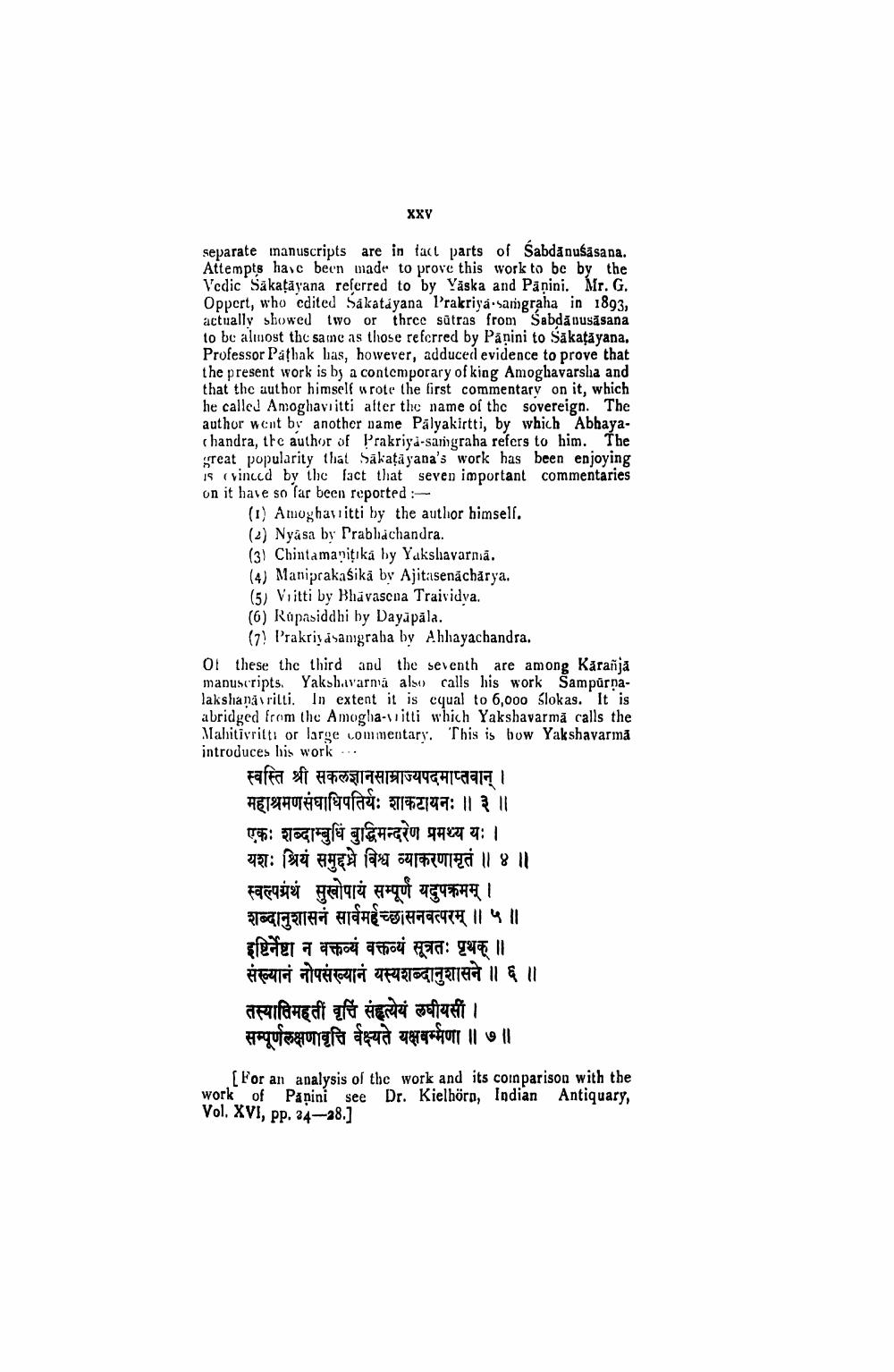________________
XXV
separate manuscripts are in fact parts of Sabda nusasana. Attempts hac been made to prove this work to be by the Vedic Sakatayana referred to by Vaska and Panini. Mr. G. Opport, who cdited Sakatāyana Prakriya.samgraha in 1803, actually showed two or three sutras from Sabda busāsana to be almost the same as those referred by Panini to Sakatāyana, Professor Pathak las, however, adduced evidence to prove that the present work is by a contemporary of king Amoghavarsla and that the author himself wrote the first commentary on it, which he called Amoghaviitti after the name of the sovereign. The author went by another name Pályakirtti, by which Abhayachandra, the author of Prakriya-samgraha refers to him. The areat popularity that Sakata yana's work has been enjoying is «vinced by the fact that seven important commentaries on it have so far been reported:
(1) Amoghavitti by the author himself. (2) Nyasa by Prabhachandra. (3) Chintamanitika by Yakshavarna. (4) Maniprakaśikā by Ajitasenācharya. (5) Viitti by Bhavascna Traividva. (6) Rúpasiddhi by Dayāpāla.
(7 Prakriyāsanigraha by Ahhayachandra. 01 these the third and the seventh are among Karanja manuscripts. Yakshavarna also calls his work Sampurnalakshapavritti. In extent it is equal to6,000 Slokas. It is abridged from the Amogla vitti which Yakshavarmā calls the Mahitivrittı or large commentary. This is bow Yakshavarma introduces his work ....
स्वस्ति श्री सकलज्ञानसाम्राज्यपदमाप्तवान् । महाश्रमणसंघाधिपतियः शाकटायनः ॥ ३ ॥ एकः शब्दाम्बुधिं बुद्धिमन्दरेण प्रमथ्य यः । यशः श्रियं समुद्दभ्रे विश्व व्याकरणामृतं ॥ ४ ॥ स्वल्पग्रंथं सुखोपायं सम्पूर्ण यदुपक्रमम् । शब्दानुशासनं सार्वमर्हच्छासनवत्परम् ॥ ५॥ इष्टिर्नेष्टा न वक्तव्यं वक्तव्यं सूत्रतः पृथक् ॥ संख्यानं नोपसंख्यानं यस्यशब्दानुशासने ॥ ६ ॥ तस्यातिमहतीं वृत्ति संहृत्येयं लघीयसीं । सम्पूर्णलक्षणावृत्ति र्वक्ष्यते यक्षवर्मणा ॥ ७ ॥
[For an analysis of the work and its coinparison with the work of Panini see Dr. Kielhörn, Indian Antiquary, Vol. XVI, pp. 24-28.]




